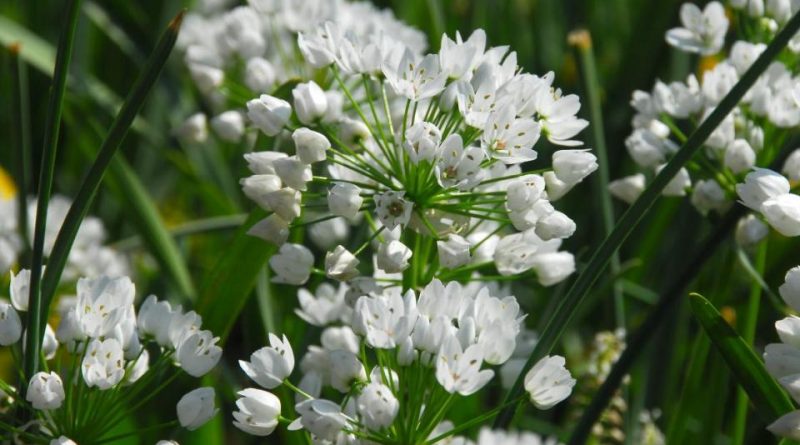Allium neapolitanum
Allium neapolitanum
Neapolitan garlic (Allium neapolitanum Cirillo) is a herbaceous species belonging to the Liliaceae family.
Systematic –
From a systematic point of view it belongs to the Eukaryota Domain, the Plantae Kingdom, the Magnoliophyta Division, the Liliopsida Class, the Liliales Order, the Liliaceae Family and therefore to the Genus Allium and to the Species A. neapolitanum.
Etymology –
The term Allium comes from the Latin Allium which is the name used for this plant which, in turn, derives from a Celtic word “all” which means pungent, hot.
The specific epithet neapolitanum refers to the area of origin or most developed.
Geographical Distribution and Habitat –
Neapolitan garlic is a typically Mediterranean species, endemic to the Alps and the Apennines, which grows in the altitude range between 0 and 800 meters above sea level.
Its habitat is that of shady and humid soils, meadows, parks, vineyards, road edges, gardens, forest clearings.
Description –
Neapolitan garlic is a perennial species, bulbous geophyte, with bulb surrounded by numerous generally reddish bulbils, which reaches heights between 20 and 60 cm.
The scape is erect, shiny green, smooth, with two acute angles and one obtuse.
The leaves are ribbon-like, 2 or 3 in number, they are up to 35 cm long and 0.7-2 cm wide, of an intense green; these sheath the stem for a quarter of its length and are faired on the lower page.
The flowers are fragrant, hermaphrodite, have 6 beveled petals and dark anthers that turn yellow with age, have a star shape of the maximum size of two cm, and are carried by floral peduncles, green of 1.5-3 cm, all more or less of the same length which are longer than the spathe and three times longer than the flowers. They are pollinated by bees and other insects.
The fruit is a capsule surrounded by dried tepals.
The antesis is between May and June.
Cultivation –
For the cultivation of this species, the same criteria adopted for other Allium species apply, for which reference is made to the specific cultivation sheet.
Uses and Traditions –
The Allium neapolitanum is a species that locally takes the names of aglitiello, wild garlic, cipaglia.
Among the similar species, with which it can be confused, we remember: Allium triquetrum (triquetro garlic) which is recognized for its scape with three very acute angles, the bivalve spathe and the conniving bell-shaped petals, white in color with green central nerve.
This species, like most Alliums, contains allicin, which gives it hypotensive, antibiotic, disinfectant, hypoglycemic properties.
Furthermore, recent research indicates that it has beneficial effects on cardiovascular disease.
As well as for food purposes like other species of garlic, it is used in the preparation of repellents against moths and other insects and also, sometimes, in gardens as an ornamental plant.
Preparation method –
Neapolitan garlic is used in the kitchen and eaten raw in salads or cooked to flavor soups and dishes.
Some gourmets collect the bulbs of this plant to use them in the same way as horticultural garlic (Allium sativum). Some farmers report that wild garlic bulbs, or cloves of cultivated garlic, can be administered to poultry, and in some cases to humans, to eliminate the infestation of worms, i.e. intestinal parasites.
Guido Bissanti
Sources
– Acta Plantarum – Flora of the Italian Regions.
– Wikipedia, the free encyclopedia.
– Treben M., 2000. Health from the Lord’s Pharmacy, Tips and experiences with medicinal herbs, Ennsthaler Editore
– Pignatti S., 1982. Flora of Italy, Edagricole, Bologna.
– Conti F., Abbate G., Alessandrini A., Blasi C. (edited by), 2005. An annotated checklist of the Italian vascular flora, Palombi Editore.
Warning: Pharmaceutical applications and alimurgical uses are indicated for information purposes only, they do not in any way represent a medical prescription; therefore, no responsibility is accepted for their use for healing, aesthetic or food purposes.


